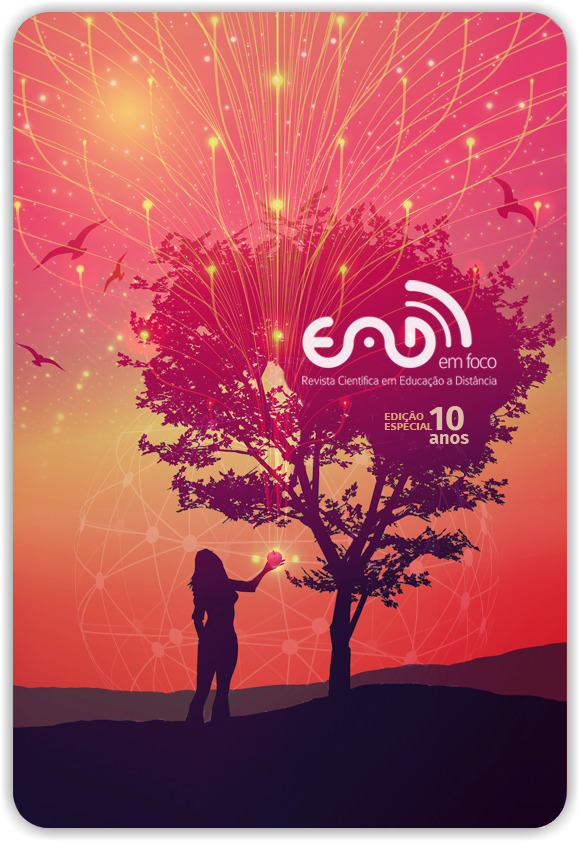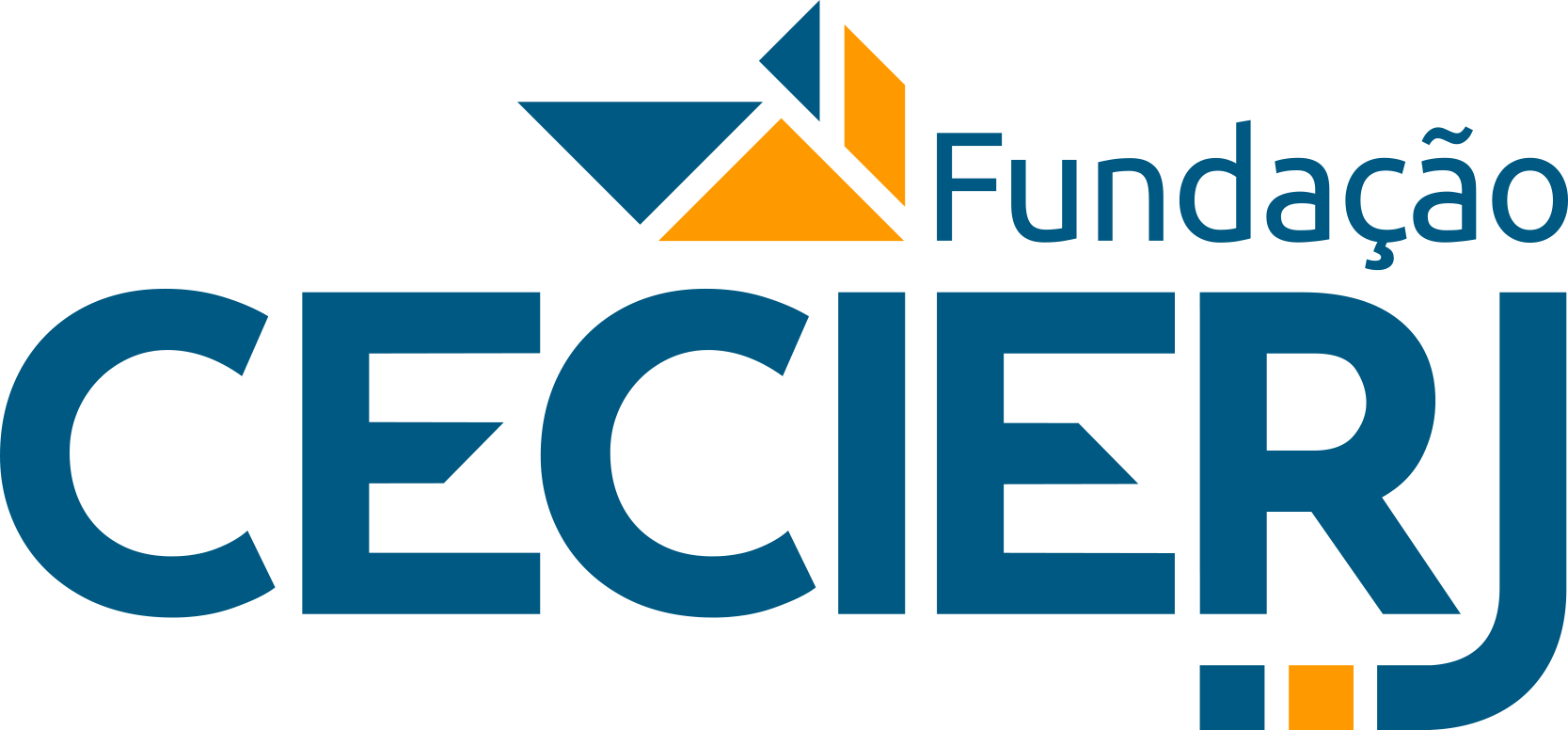The Use of Design Thinking by the Instructional Designer in the Production of Educational Materials for Distance Education
DOI:
https://doi.org/10.18264/eadf.v10i2.953Abstract
This research investigated how the adoption of the Design Thinking method can assist the instructional designer in the production of educational materials aimed at distance education. It started from the principle that the adoption of the Design Thinking method in the context of distance education can be as successful, agile and efficient, as it is presented in other contexts, such as on-site education, for example. This research used a case about the production of an audiovisual resource that ended in failure, but that could have a different result if the Design Thinking method were used. The problem that guided this research started from the question: how can the application of the Design Thinking method contribute to the work of the instructional designer, working in distance education? The objective that motivated this research was to present the Design Thinking method and discuss how its adoption can contribute to the work of the instructional designer who works in the field of distance education, especially in the production of educational resources. It was concluded that Design Thinking has the ability to be used in the context of distance education and that professionals with different expertise can benefit from using this method, including the instructional designer. Future research could investigate the application of the Design Thinking method in the production of more complex solutions, such as an educational project. Still, they could investigate the use of Design Thinking by the teacher, as an aid in the production of activities aimed at collaboration and experimentation by students.
Keywords: Design thinking. Instructional design. Distance education. Education. Design.
Downloads
References
ALVES, L. Educação a distância: conceitos e história no Brasil e no mundo. 2011. Disponível em: <http://www.abed.org.br/revistacientifica/Revista_PDF_Doc/2011/Artigo_07.pdf>. Acesso em: 03 dez. 2019.
ARAUJO, E.; OLIVEIRA NETO, J. Um novo modelo de design instrucional baseado no ILDF - Integrative Lerning Design Framwork para a aprendizagem on-line. Educação, Formação & Tecnologias. 2010. Disponível em: <http://eft.educom.pt/index.php/eft/article/view/88>. Acesso em: 06 dez. 2019.
Associação Brasileira de Educação a Distância (ABED). Censo EAD.BR: relatório analítico da aprendizagem a distância no Brasil. Curitiba: InterSaberes, 2019. Disponível em: <http://abed.org.br/arquivos/CENSO_DIGITAL_EAD_2018_PORTUGUES.pdf>. Acesso em: 10 dez. 2019.
BATISTA, M. L. F. da S.; MENEZES, M. dos S. O design gráfico e o design instrucional na Educação a Distância. Disponível em: <http://portal.anhembi.br/sbds/pdf/7.pdf>. Acesso em: 12 dez. 2019.
BEDOYA TORO, M.E. La Formación de la competencia Investigativa en los estudiantes del Instituto Tecnológico Metropolitano. 2002. Disponível em: <http://ayura.udea.edu.co:8080/jspui/handle/123456789/296>. Acesso em: 12 dez. 2019.
BROWN, A. H.; GREEN, T. D. The essentials of instructional design: connecting fundamental principles with process and practice. 3.ed. New York: Routledge, 2016.
BROWN, T. Design Thinking: Uma metodologia poderosa para decretar o fim das velhas ideias. Rio de Janeiro: Alta Books, 2009.
CASTELLANOS, L. M., PINZÓN, I. D. C. Habilidades para la vida. 8.ed. Bilbao: EDEX, 2012. Disponível em: <http://habilidadesparalavida.net/eBook/#p=2>. Acesso em: 05 dez. 2019.
CHAQUIME, L. P.; FIGUEIREDO, A. P. S. O papel do designer instrucional na elaboração de cursos de educação a distância: exercitando conhecimentos e relatando a experiência. In: Congresso Brasileiro de Ensino Superior a Distância, Belém-PA.2013. Disponível em: <http://www.aedi.ufpa.br/esud/trabalhos/poster/AT2/114065.pdf>. Acesso em: 03 dez. 2019.
CHIAVANETO, I.; SAPIRO, A. Planejamento Estratégico. São Paulo: Elsevier, 2010.
CRUZ, J. R.; LIMA, D. da C. P. Trajetória da educação a distância no Brasil: políticas, programas e ações nos últimos 40 anos. 2019. Disponível em: <https://revistas.ufpr.br/jpe/article/view/64564>. Acesso em: 04 dez. 2019.
DAMíSIO, A. O erro de Descartes: emoção, razão e o cérebro humano. São Paulo: Schwarcz, 1998.
DIEFENTHALER, A. et al. Thinking & Acting like a Designer: How design thinking supports innovation in K-12 education. 2017. Disponível em: <https://designthinking.ideo.com/resources/thinking-acting-like-a-designer-how-design-thinking-supports-innovation-in-k-12-education>. Acesso em: 05 dez. 2019.
FILATRO, A. Design Instrucional na prática. São Paulo: Pearson, 2008.
FRANÇA, G. O Design Instrucional na Educação a Distância. São Paulo: Esfera, 2007.
FORMIGA, M. (Orgs.). Educação a Distância: o estado da arte. São Paulo: Pearson Education do Brasil, 2009.
FRISENDAL, T. Design thinking business analysis: business concept mapping aplied. Kingston: Springer, 2016.
GONSALES, P. Design Thinking e a ritualização de boas práticas educativas. São Paulo: Instituto Educadigital, 2018.
Instituto Nacional de Estudos e Pesquisas Educacionais Anísio Teixeira - INEP. Resumo técnico do Censo da Educação Superior 2017. Brasília: Instituto Nacional de Estudos e Pesquisas Educacionais Anísio Teixeira, 2019. Disponível em: <http://download.inep.gov.br/educacao_superior/censo_superior/resumo_tecnico/resumo_tecnico_censo_da_educacao_superior_2017.pdf>. Acesso em: 10 dez. 2019.
JÓFILI, Z. Piaget, Vygotsky, Freire e a construção do conhecimento na escola. 2002. Disponível em: <https://www.maxwell.vrac.puc-rio.br/7560/7560.PDF>. Acesso em: 23 out. 2019.
KENSKI, V. M. Design Instrucional para cursos on-line. São Paulo: Senac, 2015.
KOH, J. H. L. et al. Design thinking for education: Conceptions and applications in teaching and learning. Singapore: Springer, 2015.
LOCKWOOD, T. Design thinking: integrating innovation, customer experience, and brand value. New York: Design Management Institute, 2009.
MARTIN, R. Design de Negócios. São Paulo: Elsevier, 2010.
MELO, A.; ABELHEIRA, R. Design Thinking & Thinking... Design. São Paulo: Novatec, 2015.
MELQUES, P. M. Designer educacional: conceituação a partir das abordagens de educação CCS e EJV no contexto de cursos na modalidade a distância. 2017. 208 f.Tese (doutorado em Educação) "” Universidade Estadual Paulista, Presidente Prudente, 2017.
MOREIRA, M. G. A composição e o funcionamento da equipe de produção. In: LITTO, F. M.; FORMIGA, M. (Orgs.). Educação a distância: o estado da arte. São Paulo: Pearson Education do Brasil, 2009, p. 370 – 378.
MOORE, M.; KEARSLEY, G. Educação a distância: uma visão integrada. São Paulo: Cengage Learning, 2010.
MUKAI, H. Sistemas Integrados de gestão de design, qualidade, ambiente, saúde e segurança no trabalho: aplicação í s pequenas e médias empresas do setor moveleiro. Tese (Doutorado em Engenharia de Produção) – Universidade Federal de Santa Catarina, SC, 2012.
NOEL, L.; LIUB, T. L. Using Design Thinking to Create a New Education Paradigm for Elementary Level Children for Higher Student Engagement and Success. Design and Technology Education: an International Journal, [S.l.], v. 22, n. 1, may 2017. Disponível em: <https://ojs.lboro.ac.uk/DATE/article/view/2198>. Acesso em: 08 dez. 2019.
PIAGET, J. A Equilibração das Estruturas Cognitivas. Rio de Janeiro: Zahar, 1976.
PINHEIRO, T.; ALT, L. Design Thinking Brasil. Rio de Janeiro: Campus, 2011.
PRETTO, N.; PINTO, C. da C. Tecnologias e Novas Educações. Revista Brasileira de Educação. Bahia: vol. 11 n.31, jan./abr. 2006.
REIGELUTH, C. Instructional-design theory and models: a new paradigm of Instructional Theory. v. II. Lawrence Erlbaum Associates, 1999.
RONCARELLI, D.; MOTTER, R. M. B.; OBREGON, R. F. A.; CATAPAN, A. H.; CYBIS, A. Desafios e perspectivas do design instrucional: contexto sociotécnico, saberes e abordagens pedagógicas. In: II Seminário Nacional em Estudos da Linguagem: Diversidade, Ensino e Linguagem, Cascavel-PR. 2010.
SANDARS, J.; LAFFERTY, N. Twelve tips on usability testing to develop effective e-learning in medical education. 2010. Disponível em: <https://www.tandfonline.com/doi/abs/10.3109/0142159X.2010.507709?journalCode=imte20>. Acesso em: 17 dez. 2019.
SANTAELLA, L. Desafios da ubiquidade para a educação. 2013. Disponível em: <https://www.revistaensinosuperior.gr.unicamp.br/artigos/desafios-da-ubiquidade-para-a-educacao>. Acesso em: 22 out. 2019.
SILVA, A. R. L. da; DIANA, J. B.; SPANHOL, F.J. Designer instrucional: da formação múltipla a atuação interdisciplinar. 2013. Disponível em: <http://www.labmidiaeconhecimento.ufsc.br/files/2014/11/desgner.pdf>. Acesso em: 11 dez. 2019.
SIMíO NETO, A. Didática e design instrucional. Curitiba: IESDE, 2009. 312 p.
VALENTE, J. A. Educação a distância: criando abordagens educacionais que possibilitam a construção de conhecimento. In: ARANTES, V. A. (Org.). Educação a distância. São Paulo: Summus, 2011.
VIANNA, M. et al. Design Thinking: inovação em negócios. Rio de Janeiro: MJV Press, 2012.
VYGOTSKY, L. S. A formação social da mente: o desenvolvimento dos processos psicológicos superiores. São Paulo: Martins Fontes, 2002.
Downloads
Published
How to Cite
Issue
Section
License
All articles published in Revista EaD em Foco receive the license
Creative Commons - Atribuição 4.0 Internacional (CC BY 4.0).
All subsequent publications, complete or partial, must be made with the acknowledgment, in citations, of the Revista EaD em Foco as the original editor of the article.













